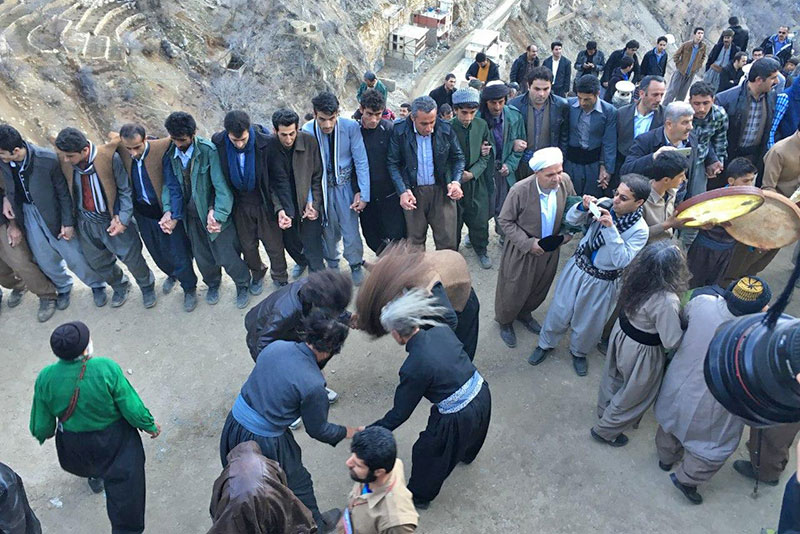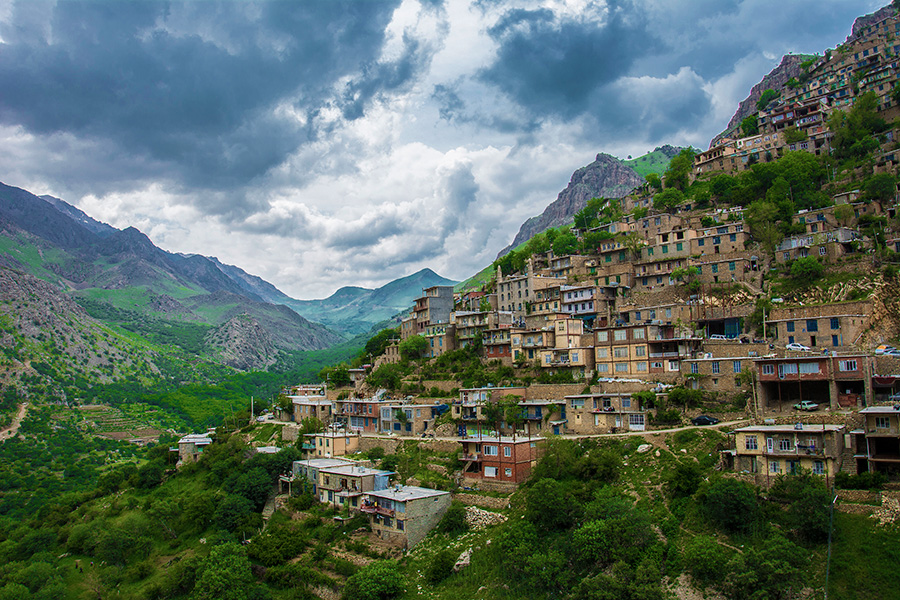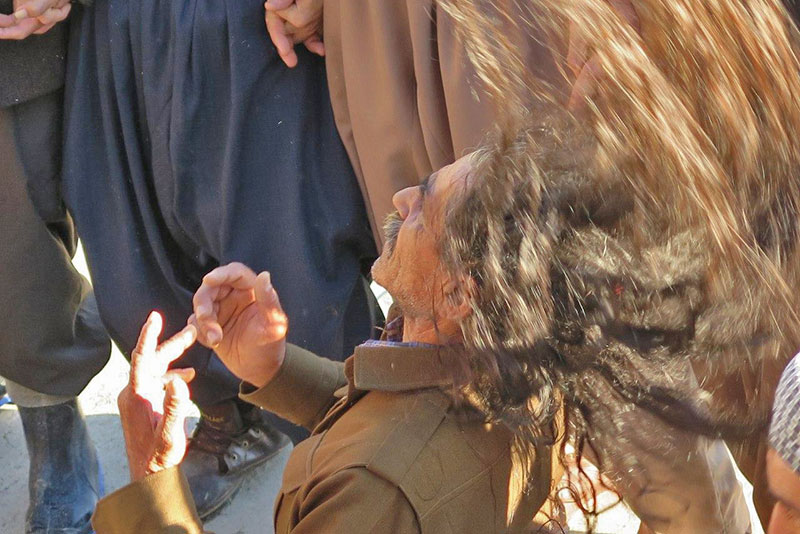 Signin with Google
Signin with Google Signin with Facebook
Signin with Facebook
 Culture,History
Culture,HistoryPir Shalyar, a Mythical Wedding Represents Blessing

Hawraman, heaven built skywards
In the west of Iran, where the Iranian Kurdistan province welds nature and culture in the foothills of the Zagros Mountains, there is a village named Hawraman or Uraman Takht with the houses built one on top of another on the upwards slopes. The architecture of the houses is an example of harmony with the surrounding environment as piled stones are the main material to build houses without any mortar to hold in place.
The name Hawraman is made of two parts, Hawra/Ahura and Maan, meaning home, and land. That means Hawraman is the land of Ahura Mazda, the creator. Despite the mountainous and difficult geographical conditions, this region is significantly different in terms of its livelihood.

This exceptional area of Hawraman is known to be a cultural landscape. The term was initially used by the cultural geographer Carl Sauer in 1920; "the cultural landscape is comprised of a natural landscape created by a cultural group.” In the region, locals believe in the past Hawraman Takht used to be the capital and of political significance to the Kurdish nation and that is the reason of getting the suffix “takht” meaning a “centre of governance” to its title.
Several thousand of Kurdish nation has lived in this region since the Parthians time in 247 BC. Their creativity in managing spring water and its divisions into the gardens, their unique handcrafts and most of all, the time-honoured celebration of Pir Shaliar during winter-which has become a symbol of their cultural identity in the area - has turned the region of Hawraman into a fascinating place to visit and study.
A wedding to countdown spring
The story of the legendary man named Pir Shaliar goes back hundreds of years ago. The deaf and mute daughter of the Iranian king of Bukhara 'Shah Bahar Khatoun' was brought to the Pir Shaliar to be cured and miraculously, she got her health back and married the Pir Shaliar upon the promise of her father. The local population believe that their wedding took place in Hawraman Takht village. According to the legends, Pir Shaliar is a Zoroastrian priest in Persian that people of Hawraman still credit him with miracles and blessings he represents.

The symbolic wedding ceremony of Pir Shaliar is held annually on the first Friday before winter enters into its second half and continues for three weeks long. Although it is called a wedding, in reality, it is a traditional and ritual ceremony.
Spreading the news
The first stage of festivities begins with the notice of a town crier that goes to the nearby villages to announce the beginning of the celebrations. Children go house by house to bring walnuts and get money, wheat or flour from the owners of the house as gifts to be used in the ceremony.

Kuteh Kuteh and Qhala Rouchini
On a Tuesday of the following week, people continue the festivity with a carnival naming “Kuteh Kuteh”, in which youths go to every household trying to scare the people while colouring their faces, and inhabitants pretend to punish them by chasing and laughing in return.
Kuteh Kuteh will be followed by another ceremony called “Qhala Rouchini “after sunset. Youths take long fabrics and throw them into the houses through open windows, then owners of the house put money, wheat and anything they have into the cloth.
The day of dance and daf
The big day finally starts at sunrise of the following day, Wednesday when people sacrifice sheep, goat, cow and cook a specific nutritive soup called “Ash” for the celebration. In the afternoon of that day, people set a line and dance with a mystic rhythm, hand in hand while in the background the beats of the “Daf”-a large Persian frame drum is played and reflect the merriment in the mountains till sunset. In the evening, villagers gather in the referred homes by the Pir Shaliar where the belongings of the Pir Shaliar are kept and be taken out to be cherished for good fortune.

The end Pir Shaliar celebration with Dakhil
On the Thursday of the following week, the last stage of Pir Shaliar comes to an end till the springtime with another ceremony called “Kumsa”.
The winter celebration of Pir Shaliar occurs in the graveyard of Hawraman Takht where men bring yoghurt and a piece of bread filled with walnuts called Gete to eat in the way to the grave of the Pir Shaliar while singing poems and playing the daf. They tie pieces of colourful fabrics known as Dakhil upon the trees of the graveyard in the hope that their wishes come true by the credit of the Pir Shaliar. The winter festivities of these three weeks end at sunset of that day yet, at the beginning of May spring festivals begin with the name of Kumsa that is the name of the stone in the Pir Shaliar’s grave tomb which Hawraman people call it for mythical meaning.

Kumsa, spring celebrations of Pir Shaliar
The legend of Kumsa says once a farmer asked the pir shaliar for blessing his harvest and livelihood while offering a stuffed vegetable dish made of grape leaf names “Dolma”. The pir shaliar told him to hit a stone with another and then take the broken pieces as a consecrated object. Since then people go to the graveyard of Pir Shaliar in spring to hit a large stone with smaller pieces of rocks and take a split to keep in their homes for good luck. And serve dolma dish in at pir shaliar’s tomb. It is believed this ritual has lasted past 900 years to be practised in the Hawraman.
People of Uraman willingly participate in these events and as a respectful tribute to their holy man, they all stop working during ceremonies. Throughout years many people around Iran and other countries have heard the story of Pir Shaliar and come together be part of this rich and exquisite event.
By Maryam Mobarhani / TasteIran

